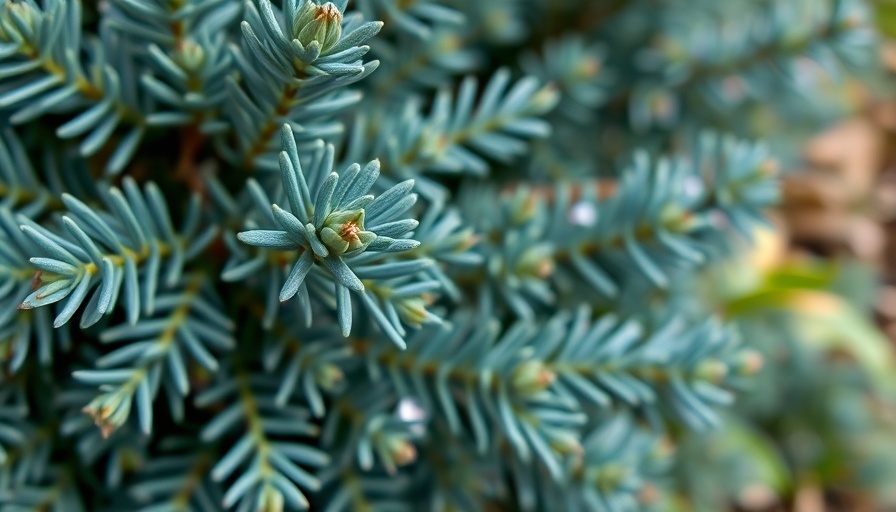
Unlocking the Potential of Blue Star Juniper in Your Garden
Cold-hardy evergreen shrubs like the Blue Star Juniper not only add a stunning touch to your garden, but they also provide unwavering color throughout the year. This dwarf cultivar, with its striking blue-tinged foliage, is gaining popularity among gardeners, especially in regions characterized by cool, temperate climates. In this article, we will explore the essential aspects of planting, growing, and caring for the Blue Star Juniper, ensuring you achieve success in your gardening endeavors.
Why Choose Blue Star Juniper?
If you’re living in USDA hardiness zones 4 through 8, this shrub could be the perfect addition to your outdoor space. The Blue Star Juniper thrives in the Pacific Northwest and can beautifully accent outdoor landscapes in cities like Portland, Eugene, and Salem. Its low, mounding habit makes it versatile, allowing it to complement various garden designs while requiring minimal care.
Moreover, this juniper variety is drought-tolerant and stands resilient against many gardening challenges where other plants may falter. This resilience makes it an ideal choice for homeowners seeking reliable plants that maintain their beauty without excessive maintenance.
Essential Facts to Know
- Plant Type: Dwarf evergreen shrub
- Family: Cupressaceae
- Genus: Juniperus
- Species: Squamata
- Native Area: Central to eastern Asia
Understanding the botanical background of the Blue Star Juniper can give gardeners valuable insights into its growth habits and environmental preferences. With this knowledge, you’re one step closer to cultivating a thriving garden.
Planting Your Blue Star Juniper
To ensure your Blue Star Juniper thrives, it’s crucial to choose the right location. Ideally, the shrub should receive substantial sunlight—about 6 hours daily—while having well-draining soil to prevent root rot. Begin by preparing your planting area, ensuring the soil is loose and aerated.
When transplanting, dig a hole twice the width and slightly deeper than the root ball of the plant. This will provide the roots with plenty of room to expand. Once placed in the hole, backfill with soil and water generously to help the plant settle in.
Care Tips for Sustained Growth
Caring for the Blue Star Juniper is relatively straightforward. Regular watering during the first few months ensures the plant establishes well. After it’s settled, occasional watering during dry spells is usually adequate due to its drought resistance.
Pruning isn’t necessary for the Blue Star Juniper, but lightly trimming to maintain shape can enhance its overall aesthetics. Regularly checking for pests and diseases will also help maintain its vibrant health.
Transforming Your Yard with Junipers
The versatile attributes of the Blue Star Juniper allow it to be paired effectively with other plants. Consider using it alongside other juniper species to create dynamic layers of visual interest in your garden. Such arrangements not only enhance beauty but also promote biodiversity.
Additionally, employing design elements such as constructing outdoor soil beds or building elevated planter boxes can maximize growing space while adding structure to your garden. Tasks like these not only enhance your yard but also facilitate planting rows that ensure each plant has ample light and resources.
Engage with Local Expertise
For those looking to elevate their gardening experience, local experts can provide invaluable advice. Norther-LawnCare.com in Muskegon offers services ranging from lawn care to winter plowing. For a well-rounded garden experience, consider reaching out to professionals to assist with your outdoor projects.
Your Garden, Your Expression
The Blue Star Juniper serves as more than just a plant; it can become a focal point or a backdrop for creative designs in your yard. Starting a backyard planting box or constructing a unique backyard utility house can offer a personalized touch that reflects your gardening passion.
As you explore the possibilities with this splendid shrub, remember that successful gardening is a journey filled with learning and creativity. Dive into your next project, cultivate your garden with enthusiasm, and watch as your landscape transforms into a vibrant piece of nature.
For expert assistance with all your landscaping needs, call your 5-star rated local lawn care and property management company at Norther-LawnCare.com, Everett Lucas 231-450-3414.
 Add Row
Add Row 
 Add
Add 


Write A Comment